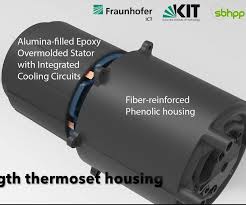
Breaking News
 The Poo Doctor: This Gut Mistake Leads To Cancer. The Cheap Spice That Helps Repair...
The Poo Doctor: This Gut Mistake Leads To Cancer. The Cheap Spice That Helps Repair...
 Vaccine ingredients Exposed - Children's Health Defence "CHD"
Vaccine ingredients Exposed - Children's Health Defence "CHD"
 Microsoft's Agentic AI Push: Genius for Business or Disaster for Your Personal Computing?
Microsoft's Agentic AI Push: Genius for Business or Disaster for Your Personal Computing?
Top Tech News
 Laser weapons go mobile on US Army small vehicles
Laser weapons go mobile on US Army small vehicles
 EngineAI T800: Born to Disrupt! #EngineAI #robotics #newtechnology #newproduct
EngineAI T800: Born to Disrupt! #EngineAI #robotics #newtechnology #newproduct
 This Silicon Anode Breakthrough Could Mark A Turning Point For EV Batteries [Update]
This Silicon Anode Breakthrough Could Mark A Turning Point For EV Batteries [Update]
 Travel gadget promises to dry and iron your clothes – totally hands-free
Travel gadget promises to dry and iron your clothes – totally hands-free
 Perfect Aircrete, Kitchen Ingredients.
Perfect Aircrete, Kitchen Ingredients.
 Futuristic pixel-raising display lets you feel what's onscreen
Futuristic pixel-raising display lets you feel what's onscreen
 Cutting-Edge Facility Generates Pure Water and Hydrogen Fuel from Seawater for Mere Pennies
Cutting-Edge Facility Generates Pure Water and Hydrogen Fuel from Seawater for Mere Pennies
 This tiny dev board is packed with features for ambitious makers
This tiny dev board is packed with features for ambitious makers
 Scientists Discover Gel to Regrow Tooth Enamel
Scientists Discover Gel to Regrow Tooth Enamel
 Vitamin C and Dandelion Root Killing Cancer Cells -- as Former CDC Director Calls for COVID-19...
Vitamin C and Dandelion Root Killing Cancer Cells -- as Former CDC Director Calls for COVID-19...
Plastic Electric Motor May Help EVs Reduce Weight

Mass, aerodynamics, and powertrain efficiency are the three pillars of a more efficient combustion engine vehicle. Although electric cars already have the most energy-efficient engine man has ever created, it also pursues low weight. And more aerodynamic designs, as pop-out door handles and cameras instead of rear-view mirrors clearly demonstrate. But they also have room for improvement. Curiously, one of these opportunities has been found on the most unlikely element: the electric motor. What if its housing is made of plastic in place of metal? This is what the Fraunhofer Institute for Chemical Technology (ICT) and the Karlsruhe Institute of Technology (KIT) have recently proposed in Germany.
"An electric motor consists of a rotating rotor and a static stator. The stator contains the copper windings that the electricity flows through – and this is where the majority of electrical losses occur", says Robert Maertens, a researcher at Fraunhofer ICT. Maertens refers to the 10 percent of losses that happen through the heat in an electric motor. This is why electric cars are so efficient: 90 percent of the electric energy becomes movement, while the very best combustion engines can only turn 40 percent of the chemical energy contained in fuels to work.

 "Boots on the Ground"
"Boots on the Ground"


